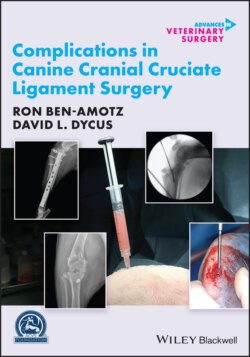Читать книгу Complications in Canine Cranial Cruciate Ligament Surgery - Ron Ben-Amotz - Страница 37
2.5.2 Perioperative
ОглавлениеThe use of perioperative antimicrobials for reduction of SSI is widely practiced in veterinary medicine. Few studies exist in veterinary medicine that provide insight into the appropriate timing for administration of perioperative antimicrobials. Therefore, guidelines followed for perioperative antimicrobial prophylaxis are largely adapted from human medicine. Current guidelines in human medicine state that an appropriate antimicrobial should be administered at least 60 minutes before the first surgical incision to allow time to achieve high serum levels, readministration of said antimicrobial should be performed every two half‐lives, and antimicrobial administration should be discontinued within 24 hours of surgery [81]. A few older veterinary studies provide evidence for perioperative antimicrobial prophylaxis as a protective factor against SSI development. These studies suggest that administration of antimicrobials should be limited to procedures longer than 90 minutes, the first dose of antimicrobial should be administered within 30 minutes of the first surgical incision, and if used appropriately, perioperative antimicrobial prophylaxis can reduce the SSI rate by 6–7 times [2, 7, 82].
Recently, appropriate perioperative antimicrobial administration has been documented to be received by 42.5–85% of animals [13, 83, 84]. Generally, more animals receive an appropriately timed first dose than those requiring additional dosing over the course of surgery. However, in one study, the previously recommended initial dosing of perioperative antimicrobial administration 30 minutes before incision was challenged, as antimicrobial administration 60 minutes or more before incision was protective against development of SSI in a cohort of animals undergoing TPLO procedures [84]. In another study, inappropriate timing of perioperative administration was not significantly associated with the development of an SSI [13]. As this is a single finding, further supportive evidence is required before considering this association to be true and thus alter perioperative antimicrobial prophylaxis recommendations.
At this time, evidence suggests that there is major room for improvement regarding compliance of perioperative antimicrobial prophylaxis, and implementation of a preoperative surgical safety checklist may improve compliance rates [67]. This lack of compliance may be leading to increased SSI rates being reported. Current recommendations for orthopedic antimicrobial prophylaxis include the use of cefazolin (22 mg/kg), administered 30 minutes before the first surgical incision, readministration every 90 minutes intraoperatively until skin closure, and discontinuation of antimicrobial therapy within 24 hours of surgery.
